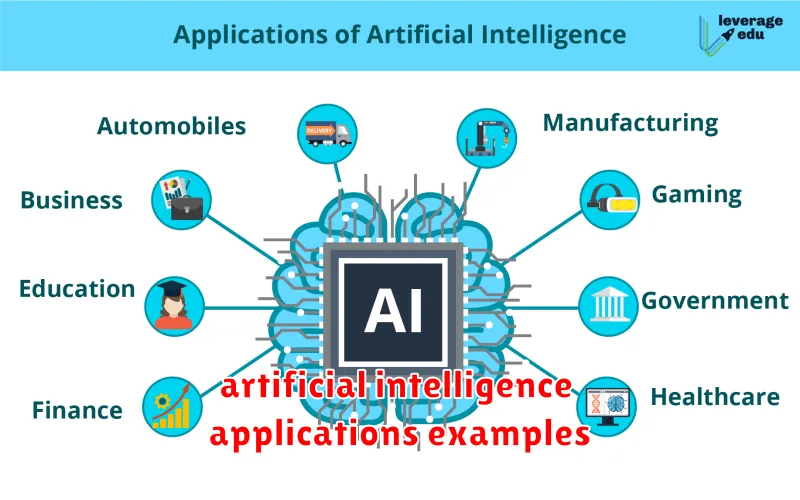In the tapestry of technological advancements, artificial intelligence (AI) stands as a transformative force, weaving its influence across industries and reshaping the very fabric of our lives. From the mundane to the extraordinary, AI is revolutionizing how we work, learn, and interact with the world around us. Its applications are vast and ever-expanding, spanning from self-driving cars and personalized medicine to automated customer service and artistic creations.
The impact of AI is profound, extending far beyond mere efficiency gains. It empowers us to solve complex problems, unlock new possibilities, and push the boundaries of human potential. However, with its rise comes a need for responsible development and deployment, ensuring that AI serves as a force for good in society. This article delves into the transformative power of AI, exploring its diverse applications, analyzing its far-reaching impact, and examining the ethical considerations that accompany its rapid evolution.
Understanding Artificial Intelligence (AI)
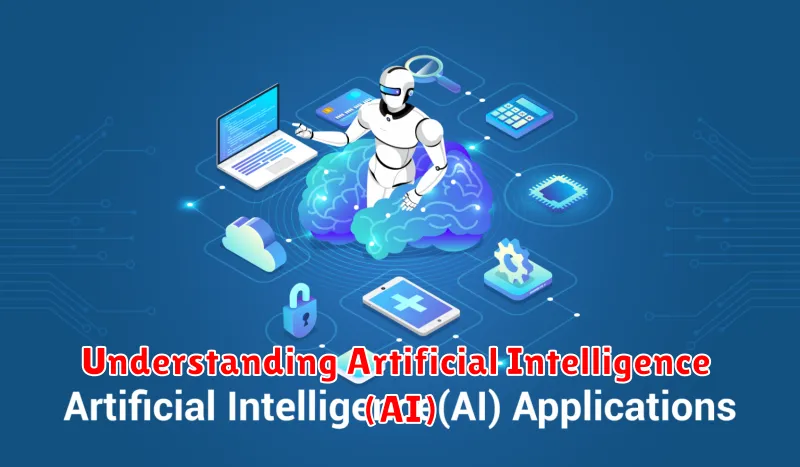
Artificial intelligence (AI) is a branch of computer science that deals with the creation of intelligent agents, which are systems that can reason, learn, and act autonomously. AI systems are designed to mimic human cognitive abilities, such as problem-solving, decision-making, and learning.
The core of AI lies in the development of algorithms that enable machines to process information, recognize patterns, and make predictions. These algorithms are trained on massive datasets, allowing them to learn and improve their performance over time.
AI can be categorized into two main types:
- Narrow or Weak AI: This type of AI is designed to perform specific tasks, such as playing chess, recognizing images, or translating languages. Most of the AI systems we interact with today fall into this category.
- General or Strong AI: This type of AI aims to create systems with human-level intelligence, capable of performing any intellectual task that a human can. General AI is still in its early stages of development.
AI is rapidly evolving and is already impacting various industries, from healthcare and finance to transportation and manufacturing. Its transformative power lies in its ability to automate tasks, improve efficiency, and unlock new possibilities.
Types of Artificial Intelligence
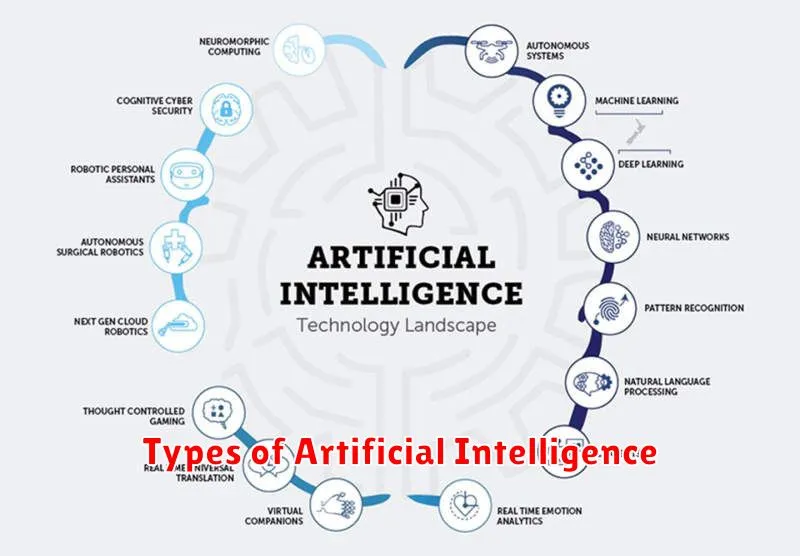
Artificial intelligence (AI) has emerged as a transformative technology, impacting various aspects of our lives. While the term “AI” is often used broadly, it encompasses different types of intelligence, each with its unique capabilities and applications. Understanding these types is crucial for comprehending the potential and limitations of AI.
One way to categorize AI is based on its level of intelligence, which can be broadly classified into three main types:
1. Narrow or Weak AI
This is the most common type of AI that is designed to perform specific tasks. Narrow AI systems excel at completing well-defined tasks, often outperforming humans in their specific domains. Examples include image recognition software, spam filters, and virtual assistants like Siri or Alexa. They are trained on vast datasets and can make predictions and decisions based on the information they have learned. However, narrow AI systems lack the general intelligence and adaptability of humans and cannot perform tasks outside their programmed domain.
2. General or Strong AI
General AI, also known as strong AI, refers to AI that possesses human-level intelligence and can perform any intellectual task that a human can. This type of AI is still in its theoretical stage and remains a challenging goal for researchers. While some argue that it may be impossible to achieve, others believe that advances in computer science and neuroscience will eventually pave the way for general AI. Systems with general AI would be able to learn, adapt, and solve problems across various domains, just like humans.
3. Super AI
Super AI is a hypothetical type of AI that surpasses human intelligence in all aspects. It would possess intelligence far beyond human capabilities, potentially leading to an entirely new level of problem-solving and innovation. While super AI remains a topic of science fiction, the potential implications of such a powerful entity are both exciting and daunting. Some believe it could lead to a new era of prosperity and technological advancement, while others worry about its potential risks, such as existential threats to humanity.
Understanding these different types of AI is crucial for navigating the evolving world of this technology. As AI continues to advance, its impact on our lives will become increasingly significant. By understanding the capabilities and limitations of each type of AI, we can harness its potential while mitigating potential risks.
AI Applications in Business and Industry
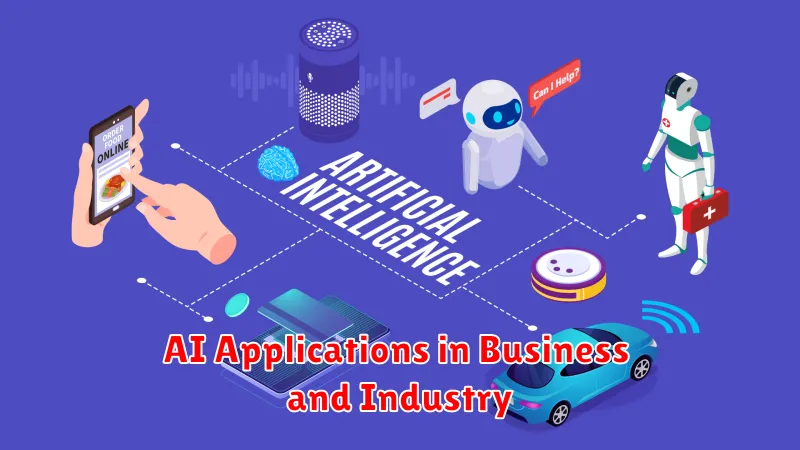
Artificial Intelligence (AI) is rapidly transforming businesses and industries across the globe. Its ability to analyze vast amounts of data, automate processes, and make intelligent decisions has created a wave of innovation and efficiency. AI applications are now integral to various aspects of business operations, from customer service to manufacturing. Here are some key areas where AI is making a significant impact:
Customer Service
AI-powered chatbots and virtual assistants are revolutionizing customer service. They provide instant responses to customer queries, handle routine tasks, and personalize interactions. This improves customer satisfaction, reduces wait times, and frees up human agents to focus on complex issues.
Marketing and Sales
AI is used to analyze customer data, predict buying behavior, and personalize marketing campaigns. It can recommend products, target specific customer segments, and optimize advertising spend. This leads to increased conversion rates and improved marketing ROI.
Operations and Supply Chain Management
AI algorithms can optimize supply chain operations, predict demand, and manage inventory levels. They can also automate tasks like scheduling, routing, and quality control, leading to significant cost savings and improved efficiency.
Manufacturing
AI is being used to automate manufacturing processes, optimize production lines, and improve product quality. Predictive maintenance algorithms can identify potential equipment failures before they occur, reducing downtime and maintenance costs.
Finance and Accounting
AI is used for fraud detection, risk assessment, and financial forecasting. It can automate tasks like data entry, reconciliation, and reporting, freeing up financial professionals to focus on strategic initiatives.
Human Resources
AI can streamline hiring processes, identify potential candidates, and personalize training programs. It can also analyze employee data to identify trends and improve workforce planning.
The transformative power of AI is undeniable. Businesses that embrace AI technologies will be better positioned to compete in the future. By leveraging AI’s capabilities, companies can unlock new opportunities, improve efficiency, and create a competitive advantage.
AI in Healthcare: Diagnosis and Treatment

Artificial intelligence (AI) is rapidly transforming the healthcare industry, revolutionizing how diseases are diagnosed and treated. AI-powered tools are being used to analyze vast amounts of medical data, identify patterns, and provide insights that can help healthcare professionals make more accurate diagnoses and develop personalized treatment plans.
One of the most promising applications of AI in healthcare is in the area of diagnosis. AI algorithms can be trained on massive datasets of medical images, patient records, and other relevant information to learn how to identify diseases and conditions with high accuracy. For example, AI systems are being used to detect early signs of cancer in mammograms, identify diabetic retinopathy in retinal images, and diagnose heart disease based on electrocardiogram data.
AI is also playing a crucial role in treatment. AI-powered systems can assist doctors in developing personalized treatment plans based on a patient’s individual characteristics and medical history. They can also help monitor patients’ responses to treatment, identify potential side effects, and suggest alternative treatment options if necessary. Furthermore, AI is being used to develop new drugs and therapies, accelerate clinical trials, and improve the accuracy of surgical procedures.
The impact of AI on healthcare is significant. It has the potential to improve the accuracy and efficiency of diagnosis and treatment, reduce medical errors, personalize care, and enhance patient outcomes. However, it is important to note that AI is not a replacement for human healthcare professionals. Instead, it serves as a powerful tool that can augment their capabilities and improve patient care.
AI in Finance: Fraud Detection and Risk Management

Artificial intelligence (AI) is rapidly transforming the financial industry, offering innovative solutions for fraud detection and risk management. AI’s ability to analyze vast datasets, identify patterns, and predict future outcomes empowers financial institutions to enhance security and efficiency.
AI-powered fraud detection systems excel in real-time transaction monitoring. By analyzing transactional data, user behavior, and external information, these systems can identify suspicious activities and flag potential fraud. AI algorithms can detect anomalies and deviations from typical patterns, allowing for early intervention and minimizing financial losses.
AI also plays a crucial role in risk management. By analyzing market data, economic indicators, and customer profiles, AI models can assess and predict risks associated with investments, loans, and other financial operations. These insights enable institutions to make informed decisions, manage their portfolios effectively, and mitigate potential losses.
Furthermore, AI-driven solutions can automate routine tasks, freeing up human resources for more complex and strategic initiatives. From customer onboarding to regulatory compliance, AI streamlines operations and reduces operational costs.
The transformative power of AI in finance is undeniable. By enhancing fraud detection, improving risk management, and automating processes, AI is revolutionizing the financial industry and fostering a more secure and efficient environment.
AI in Retail: Personalized Experiences and Supply Chain
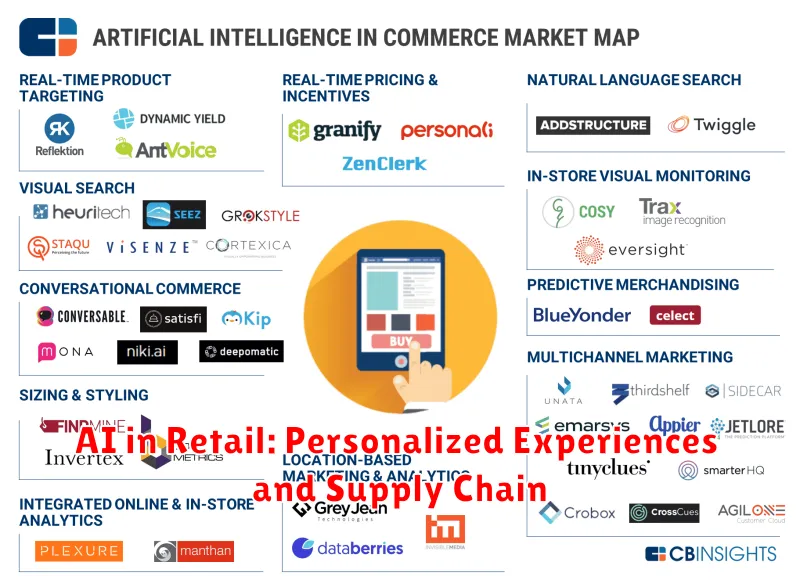
The retail industry is undergoing a significant transformation, driven by the rapid adoption of artificial intelligence (AI). AI is revolutionizing how retailers interact with customers, manage inventory, and optimize their supply chains. By harnessing the power of AI, businesses can enhance customer experiences, improve operational efficiency, and gain a competitive edge in today’s dynamic market.
Personalized Experiences:
AI enables retailers to provide highly personalized experiences for customers. By analyzing customer data, AI algorithms can identify individual preferences, buying habits, and browsing patterns. This information allows retailers to offer tailored product recommendations, targeted promotions, and personalized content, creating a more engaging and relevant shopping experience. AI-powered chatbots can also provide instant customer support and answer queries, enhancing customer satisfaction.
Supply Chain Optimization:
AI plays a crucial role in optimizing retail supply chains. By analyzing historical data and market trends, AI algorithms can predict demand fluctuations, optimize inventory levels, and improve forecasting accuracy. This enables retailers to reduce stockouts and overstocking, leading to lower costs and improved efficiency. AI-powered logistics solutions can also optimize delivery routes, manage warehouse operations, and streamline order fulfillment, ensuring timely and cost-effective delivery.
The Impact of AI in Retail:
The adoption of AI is transforming the retail landscape, bringing numerous benefits:
- Increased Revenue: AI-driven personalization and optimized supply chains contribute to increased sales and revenue growth.
- Improved Customer Loyalty: Personalized experiences and efficient service enhance customer satisfaction and foster loyalty.
- Enhanced Operational Efficiency: AI streamlines operations, reducing costs and improving productivity.
- Data-Driven Decision Making: AI provides valuable insights and data-driven recommendations, enabling retailers to make informed decisions.
AI is a powerful tool that can help retailers thrive in today’s competitive market. By leveraging AI for personalization and supply chain optimization, retailers can create exceptional customer experiences, optimize operations, and achieve sustainable growth.
AI in Manufacturing: Predictive Maintenance and Automation
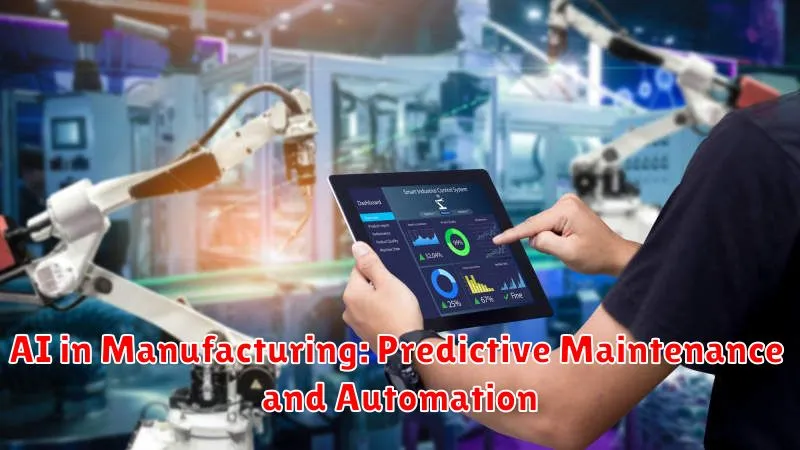
Artificial intelligence (AI) is revolutionizing the manufacturing industry, transforming how products are designed, produced, and maintained. One of the most impactful areas where AI is making its mark is in predictive maintenance and automation.
Predictive maintenance leverages AI algorithms to analyze data from sensors and other sources to predict when equipment is likely to fail. By anticipating breakdowns, manufacturers can schedule maintenance proactively, reducing downtime, and minimizing costly repairs.
Automation, powered by AI, is streamlining manufacturing processes. Robots equipped with AI can perform tasks that are dangerous, repetitive, or require precision, freeing up human workers for more complex and value-added roles. AI-driven systems can also optimize production schedules, manage inventory levels, and improve quality control.
The benefits of AI in manufacturing are numerous. By enhancing efficiency, productivity, and product quality, AI helps manufacturers:
- Reduce operational costs
- Increase output
- Improve product quality
- Create a safer work environment
- Gain a competitive edge
As AI technologies continue to advance, the impact on manufacturing will only grow. AI-driven predictive maintenance and automation are paving the way for a future of smarter, more efficient, and sustainable manufacturing practices.
AI in Education: Personalized Learning and Automation

The integration of artificial intelligence (AI) in education is ushering in a new era of personalized learning and automation. AI-powered tools are transforming the way students learn and teachers teach, creating a more efficient and engaging educational experience.
One of the most prominent applications of AI in education is personalized learning. AI algorithms can analyze student data, such as test scores, homework assignments, and even their interactions with learning platforms, to identify their strengths, weaknesses, and learning styles. This information allows educators to tailor learning paths and materials to individual student needs, providing them with the support and challenges they require to succeed.
Another key aspect of AI in education is automation. AI tools can automate repetitive tasks such as grading multiple-choice quizzes, generating personalized feedback, and scheduling assignments. This frees up teachers’ time to focus on more complex tasks, such as providing individualized support to students and developing engaging lesson plans.
AI-powered learning platforms can also provide students with real-time feedback and adaptive learning experiences. These platforms adjust the difficulty level of content based on a student’s performance, ensuring that they are constantly challenged and engaged. They can also provide instant feedback on assignments, allowing students to learn from their mistakes and improve their understanding.
In conclusion, AI is revolutionizing education by enabling personalized learning, automating tasks, and enhancing the learning experience for students. By harnessing the power of AI, educators can create a more equitable and effective educational system that empowers students to reach their full potential.
Ethical Considerations and the Future of AI
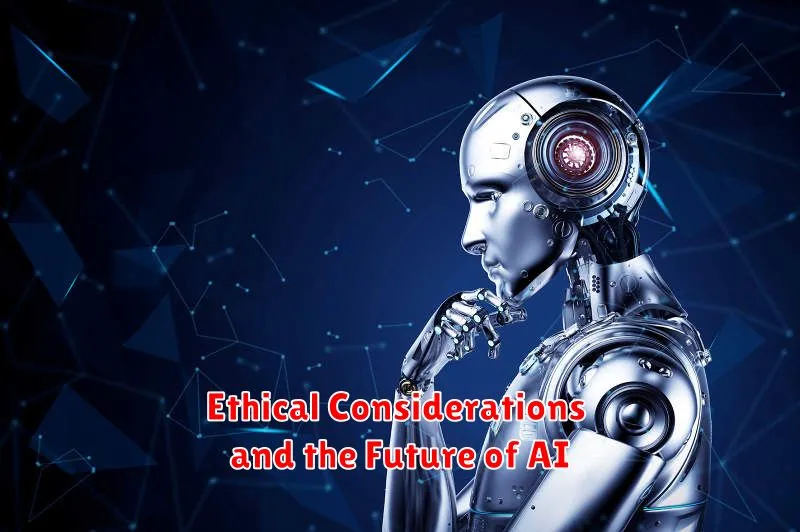
As artificial intelligence (AI) continues to advance at an unprecedented rate, it is crucial to consider the ethical implications of its development and deployment. The transformative power of AI holds immense potential to revolutionize various industries and improve our lives, but it also presents significant ethical challenges that need to be addressed.
One of the most pressing concerns is the potential for AI to exacerbate existing societal inequalities. If AI systems are not developed and deployed responsibly, they could perpetuate biases based on race, gender, or socioeconomic status. It is essential to ensure that AI algorithms are fair, transparent, and accountable, preventing discriminatory outcomes and promoting equity.
Another ethical issue is the impact of AI on employment. As AI automation becomes more sophisticated, it has the potential to displace workers from certain jobs. It is important to consider how we can mitigate the economic consequences of job displacement and ensure that workers have access to retraining and opportunities in emerging fields.
Furthermore, the increasing use of AI in areas such as surveillance, law enforcement, and healthcare raises concerns about privacy, autonomy, and accountability. It is critical to establish clear guidelines and regulations to protect individuals’ privacy and ensure that AI systems are used in a way that respects human dignity and autonomy.
To navigate these ethical challenges, it is essential to foster a multidisciplinary dialogue that involves experts from various fields, including computer science, ethics, law, and social sciences. This dialogue should focus on developing ethical frameworks, standards, and guidelines for the development and deployment of AI.
The future of AI depends on our ability to address these ethical considerations proactively and responsibly. By embracing ethical principles and prioritizing human well-being, we can harness the transformative power of AI for the benefit of all.
AI and the Job Market: Challenges and Opportunities
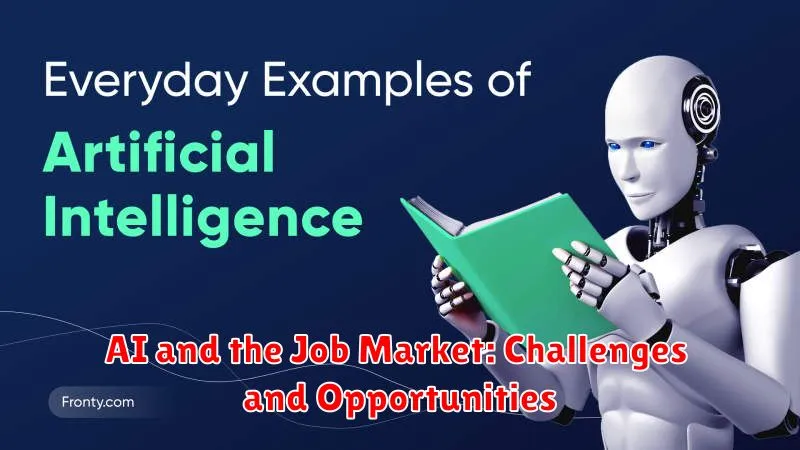
The rapid advancement of artificial intelligence (AI) has sparked widespread discussions about its potential impact on the job market. While AI offers numerous opportunities to improve efficiency, productivity, and innovation, it also presents certain challenges that require careful consideration.
Automation is one of the most prominent challenges. AI-powered systems can automate tasks previously performed by humans, potentially leading to job displacement in certain sectors. This raises concerns about unemployment and the need for workforce reskilling and upskilling.
However, AI also creates new opportunities. As AI systems automate routine tasks, it frees up human workers to focus on more complex, creative, and strategic endeavors. This leads to the emergence of new job roles in fields like AI development, data science, and AI ethics.
To navigate this evolving landscape, individuals and organizations must embrace continuous learning and adaptation. Upskilling and reskilling programs can equip workers with the necessary skills to thrive in an AI-driven economy. Moreover, fostering a culture of lifelong learning is essential to stay ahead of the technological curve.
The key lies in striking a balance between the challenges and opportunities presented by AI. By embracing a proactive approach, embracing innovation, and investing in education and training, we can harness the transformative power of AI to create a more prosperous and equitable future for all.

